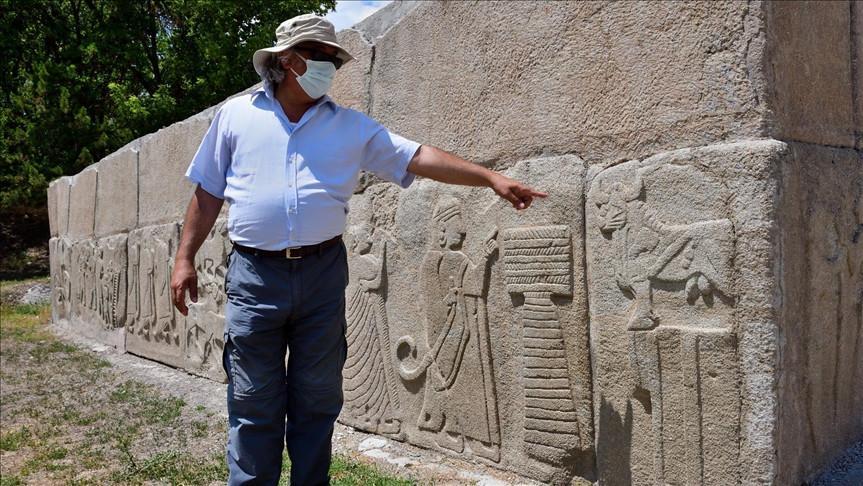
Works that have been carried out in the ancient site of Alacahöyük, one of the first archaeological excavations of the Republic era, aim to reveal the detailed cultural timeline of the 7,000-year-old city.
Excavations in the Central Anatolian province of Çorum’s Alacahöyük village, which started in 1935 with the order of the founder of Turkish Republic, Mustafa Kemal Atatürk, and the contribution of his personal wealth, still continue.
The ancient site of Alacahöyük, located 53 kilometers away from the city center, is among the most important archaeological centers of Anatolia as it embraced different civilizations since the Chalcolithic Age.
Local and foreign researchers from different disciplines have so far worked in the excavations where important traces of the ancient Anatolian cultural history, as well as the Hatti and Hittite civilizations, have been unearthed.
Archaeological excavations stopped after the death of the previous head of the excavation, Professor Aykut Çınaroğlu, and resumed in 2020 under the chairmanship of Professor Tayfun Yıldırım, a lecturer at Ankara University’s Department of Protohistory and Near East Archaeology.
Speaking to the state-run Anadolu Agency, Yıldırım said that they focused on two main goals this year in Alacahöyük.
“One of my main goals is to identify the details of the cultural timeline in Alacahöyük and to reveal the place of the city in the chronology of Central Anatolia in line with this new information. A chronology has been attempted to be made in this place since 1935, but this chronological system must compete and be in harmony with the chronology we have obtained in other Hittite cities or other mounds today. Therefore, we will conduct test drillings in some areas,” Yıldırım said.
“In particular, we need new data to build the Chalcolithic and Early Bronze Age chronology on a solid basis. The dating methods, frequently used in the scientific world, and the place of Alacahöyük cultural layers are extremely important in history,” he added.
Stating that they will also examine the surrounding settlements during the excavations, Yıldırım said that they carry out geophysical studies around the ruins.
Noting that they will trace the traces of different cultures in the “lower city” part of Alacahöyük in this year’s excavation program, Yıldırım said: “My other purpose is to determine what kind of archaeological formation is there not only in the mound but also around the mound.”
“We started this project last year. We are scanning around the ruins using geophysical methods. It was also reported by the previous team that there is a ‘lower city’ here, but we need to reveal the details. For this, we will conduct test drillings. According to these drillings, we will try to find if there was a Bronze Age culture here or a ‘karum area’ [trade center established next to the city] in the era of Assyrian trade colonies. We will try to find answers to these questions,” he added.
Highlighting that Alacahöyük was an important cult city belonging to the Hittites, Yıldırım said: “Our primary goal is to preserve and protect the Hittite city with all its ruins. In other words, we need to somehow protect the Hittite palace complex, the structures connected to it, small temples, warehouses and granaries that were unearthed in previous excavations, as these ruins are the most beautiful visual elements of the city that are open to visitors. Our primary goal is to protect them. Previous teams made an archeology park plan here. We will continue our efforts to develop this plan and adapt it to today’s conditions. Alacahöyük is our ancestral heritage.”